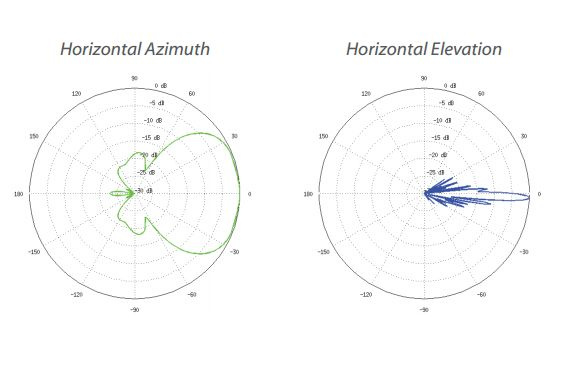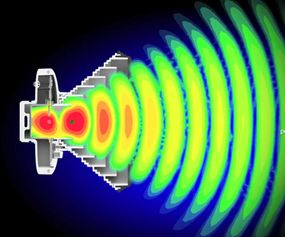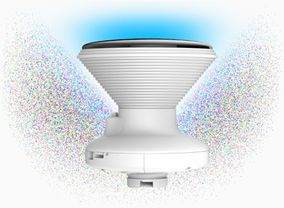The second time he threw a net. Exploring the second generation of Airmax AC

Ubiquiti, despite its already more than 10 years of age and considerable size, continues to be "young and dynamic." And the product lineup is updated very, very quickly. Before we had time to switch to Airmax AC, we are already offered Airmax AC gen2. Let's look at the new products, see if they really are wave 2 and is it worth it to switch to?
First, let's see what models the manufacturer updated: LiteBeam ac, PowerBeam ac, NanoBeam AC, Rocket AC. In short - updated all models. We will study new solutions in more detail.
Now we will answer the main question: this is the second generation of AirMax AC and not 802.11ac wave 2: Multi user MIMO should not be expected in this generation of equipment (however, we will soon please you with material about equipment supporting such technology), as well as 160 MHz bands frequencies (and this is good, the ether is already very busy).
What then will please the new line?
1) An additional 2.4 GHz radio module in all devices used for the initial setup of equipment - now you can configure the communication channel without a laptop at all from your smartphone, this is how the procedure looks:
When you turn on the power, the access point turns on its 2.4 radio module for 15 minutes GHz, you connect with a smartphone and configure the equipment through the Umobile app. After the initial setup, this mode can be turned off for security reasons.

2) New radio chips with improved sensitivity, extrapolating our measurements during the transition from Airmax AC to Airmax AC gen2, we can expect about 3 dB of sensitivity improvement, which means that some subscribers will be able to transfer to higher modulation.
3) The massive introduction of metal cases at base stations should significantly improve their resistance to interference. Thank you, RF ARMOR, you were a pioneer in shielding Ubiquiti, but now we have a shielded solution “out of the box”
4) Returning GPS receivers to base stations. We are promised a full TDMA GPS sync (though with Rocket Titanium they also promised, but it didn’t work out) ...
5) And, in my opinion, the main difference between the new solution and AirMax and AirMax AC is the new family of sector antennas and the transition from the paradigm “capacity of a single sector by maximizing the energy of the channel” to “capacity of a multi-sector base station, radio frequency compatibility."
In other words, we get a new line of sector antennas built on the technology of horns, which promises almost no side and rear lobes of radiation.
It should be noted that the solution with horns did not appear from scratch: sector horn antennas from Rfelements were previously available, in fact, the high performance of these solutions, in my opinion, made Ubiquiti abandon the classic sector antennas.
Compare the radiation pattern of new solutions and classic sector antennas:


The difference, as they say, is on the face.

Beautiful picture from the manufacturer.
However, horn antennas also have a small drawback, namely, a significantly lower gain than classical sector antennas. For example, a 45-degree horn has a gain of only 14 dBi, while 90-degree classic antennas can have a gain of 18 or more dBi. However, in cases of a large number of subscribers and base stations, the record range of one sector is usually not so necessary.

Range of Airmax AC gen2 antennas and their approximate radiation patterns.
The only thing you need to understand is that when choosing Airmax AC gen2 you automatically choose horn antennas with all their advantages and disadvantages - you won’t be able to connect the device to a regular sector antenna, the radio connectors are completely incompatible. Likewise, earlier equipment cannot be connected to horn antennas (however, in the future, an adapter may also appear).
So, the lineup:
New Prismstation AC base stations: a new base station solution, with a GPS module, out-of-band interference filter and horn antennas.


Manufacturer's recommended option with a 45 degree horn antenna. Options of 30.60.90 degrees are also available. The IsoStation AC device, very similar in appearance to PrismStation AC, is an analogue of Rocket AC lite, differs from PrismStation in the absence of filtering of out-of-band emission of AirPrism and the absence of a GPS module; accordingly, it is more logical to put it on antenna positions that are slightly prone to out-of-band interference.
Isostation AC twin brother - Isostation, a device based on the 802.11n chip, can use the same horn antennas, designed to increase the efficiency of older networks using AirMax equipment
With client equipment, everything is simpler, almost all AirMax AC models have an analog of gen2, characterized by the presence of a dedicated radio module for tuning. The exception was NanoBeam AC 16 and PowerBeam AC 620 - they have no gen2 analogues yet.

Findings. In general, we can say that the second line of AirMax AC was not a revolution, but rather an evolution of the family.
If we discard minor amenities, such as a radio module for setting up the device from a smartphone, the main change is development in the direction of reducing the level of interference and a higher density of sectors.
Unfortunately, there is a clear minus: at the moment there is no way to use the old Rocket AC with Ubiquiti horn antennas and vice versa, PrismStation with high gain sector antennas.
That is, at the stage of network design, you will have to choose active equipment based on what is more important in implementation: better noise immunity and electromagnetic compatibility of PrismStation horn antennas, or a higher gain of Airmax AC sector antennas.
